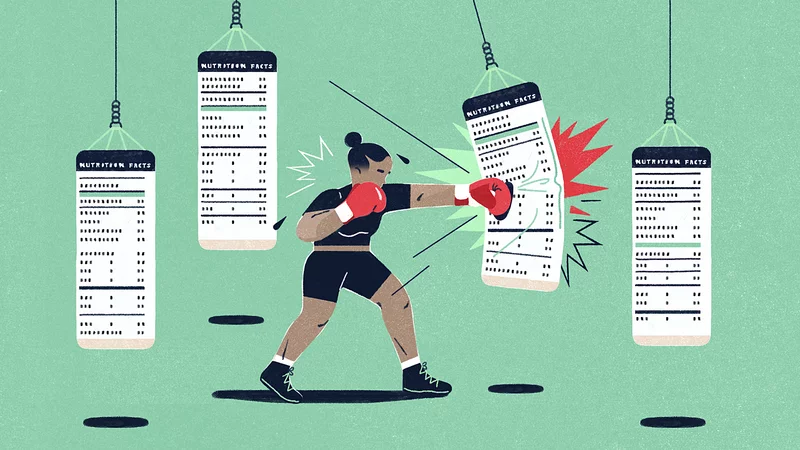The Dangerous World of Diet Culture
August 22, 2022
Learn how to fight off diet culture
TRIGGER WARNING: If you are sensitive to talks about diet culture, eating disorders and body dysmorphia : STOP READING
Diet culture is everywhere, and it is oftentimes hard to escape. One of the biggest goals for every human is being fit and healthy, just look at how many new year’s resolutions are to get fit and work out and even to be on diets to obtain this. Americans spend about 30 billion dollars annually on diet products and an estimated 45 million Americans diet every year. There are many reasons why one might want to change their body, but oftentimes it relates back to social media and diet culture which can oftentimes be linked to each other. Diet culture is seen as a collective set of social expectations. Biologically, dieting can lead to many unhealthy changes in the body. Overall it can cause hormonal changes, reduced bone density, menstrual disturbances, and lower resting energy expenditure. We will be focusing on two main diets and what they can deprive your body of. We will be talking about the Keto diet, along with the Paelo diet.
Keto
The Keto diet is a high fatty, and low carbohydrate diet, which is known best to help lose weight and get “healthy.” The Keto diet has been known to be very similar to that of the Atkins diet. On the Keto diet, you are not allowed to eat a wide list of foods, including…
- Beans, peas, lentils, and peanuts.
- Grains, such as rice, pasta, and oatmeal.
- Low-fat dairy products.
- Added sugars and sweeteners.
- Sugary beverages, including juice and soda.
- Traditional snack foods, such as potato chips, pretzels, and crackers.
The Keto diet was originally developed and is primarily used to manage seizures in children with epilepsy. However, according to Racheal Kelinman, who is a clinical dietitian at Ingalls, research done about the diets effectiveness in being able to treat obesity or diabetes is very limited. Ketosis is a metabolic adaptation to allow the body to survive in a period of famine and hunger. Your body will break down Ketone bodies, a type of fuel that the liver produces from fat, instead of sugar or glucose from carbohydrates. To activate this Ketosis that the Keto diet is trying to reach, you need to eat about 75% of your calories from fat, compared to the 20-35% that the normal person consumes. It also requires 5% of the calories to be from carbs, and about 15% of the calories ingested to be from proteins. As far as the safety part of this diet comes in, the Keto diet could cause low blood pressure, kidney stones, constipation, nutrient deficiencies and an increased risk of heart disease. Diets such as the Keto diet could often cause disordered eating as well as social isolation. The Keto diet is also seen to not be safe for those with any conditions surrounding their pancreas, liver, thyroid, or gallbladder.
Paleo
The Paleo diet is a very popular diet, that is also sometimes known as the caveman or stone-age diet, which consists of lean meats, fish, vegetables, nuts and seeds. Proponents of this diet include highly emphasizing choosing low glycemic fruits and vegetables. The Paleo diet is known for being acceptable to foods that in the old days could be obtained by hunting and gathering. The Paleo diet tries to cut out and limit food that came upon with farming, such as diary products, legumes, and grains. In terms of overall health, the paleo diet is high in saturated fats due to the increased intake of protein from animal food sources. Over time people who have been following this diet and partaking in this diet could see many increases in cholesterol, which could potentially increase the risk of heart disease. Although many see results following the Paleo diet, this is due to cutting out certain food groups which can ultimately improve some health markers and lead to weight loss, however it can also result in nutrient deficiencies and increase the risk of some long term health concerns. For example, a Paleo diet restricts dairy products, which are very high in vitamin D as well as calcium, and are two essential nutrients for bone health. Deficiencies in these areas can lead to osteoporosis and bone fractures.
Therefore through all of this information above, although these diets can’t cause any fatal or lethal diseases, they can oftentimes lead to many deficiencies in many different areas. These two diets while very popular in the media today. While many people still love to follow these two diets, because they oftentimes do see the results that they are trying to obtain. Be sure to check the factors and the risks associated with both of these diets, and follow them with caution, as many of them can be harmful to the body in the meantime. Both of these diets could also have long lasting effects on the body that will not come until after the “amazing results” begin to show up.



